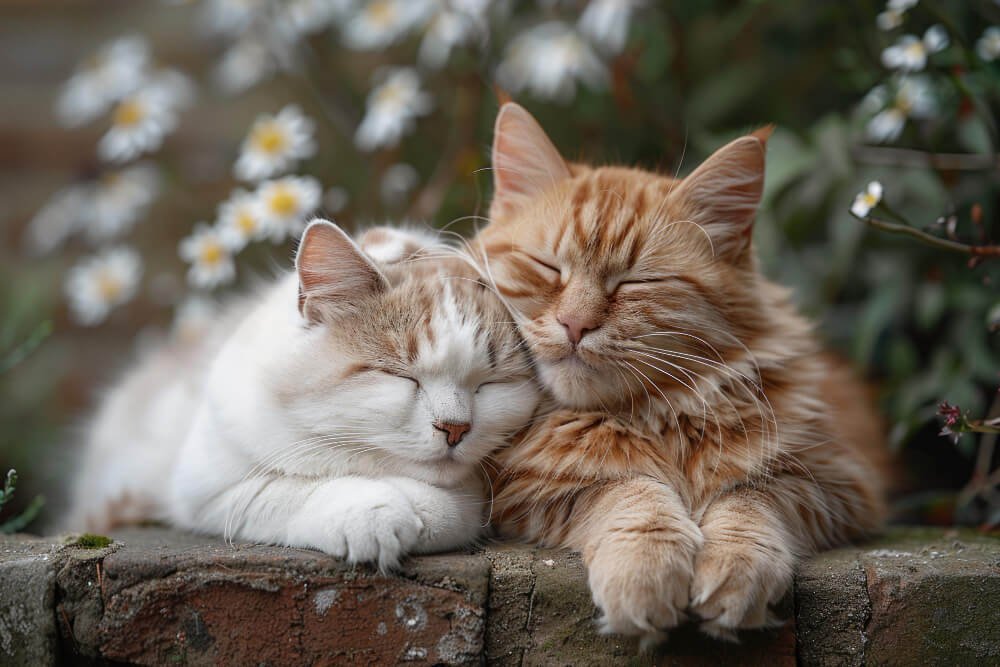20 Fascinating Facts You Probably Don’t Know About Cats
Cats are one of the most popular pets worldwide, yet many aspects of their behavior, biology, and history remain unknown to even the most dedicated cat lovers. Here are 20 surprising facts about cats that may change the way you see your feline friend!
1. Cats Have a Unique “Righting Reflex”
Cats are famous for their ability to land on their feet, thanks to their “righting reflex,” which helps them twist in mid-air and land safely. This skill develops as early as three weeks old and is supported by their highly flexible backbones.
2. Cats Spend Around 70% of Their Lives Sleeping
On average, a cat sleeps 13–16 hours a day. In a lifetime, that means a typical cat spends about two-thirds of its life sleeping—a trait passed down from their wild ancestors who needed rest to conserve energy for hunting.
3. They’re Near-Sighted, but Have Great Peripheral Vision
While cats can see well in low light, they’re actually near-sighted compared to humans. However, their wide peripheral vision and excellent night vision more than make up for this, aiding them as skilled hunters.
4. Cats Have a Unique Organ for Sensing Pheromones
The vomeronasal organ, located on the roof of their mouths, helps cats “taste” smells, especially pheromones. This explains the Flehmen response—when a cat opens its mouth and appears to “sneer” after sniffing something interesting.
5. Purring Has Healing Properties
Cats purr at frequencies between 25–150 Hz, which can have healing effects, such as reducing stress and helping with pain and wound healing. Some believe this frequency can even help humans relax and lower blood pressure.
6. Cats’ Nose Prints Are Unique
Just like human fingerprints, a cat’s nose print is unique to each individual. Though nose prints aren’t commonly used for identification, this is a little-known fact that underscores each cat’s uniqueness.
7. Meowing is Meant Just for Humans
In the wild, adult cats rarely meow at each other. This behavior is mostly used to communicate with humans—a behavior adapted from kittens who meow to get their mothers’ attention.
8. They Can’t Taste Sweetness
Due to a genetic mutation, cats lack taste receptors for sweetness. This makes them one of the few animals that don’t crave sugary foods, which aligns with their carnivorous diets.
9. A Cat’s Whiskers Are Extra Sensitive
Cats’ whiskers are finely tuned sensors that help them detect their environment and judge spaces. These whiskers can even help them “see” in the dark, making whisker health essential for their overall spatial awareness.
10. Cats Have Excellent Night Vision
Thanks to a higher concentration of rod cells in their eyes, cats can see in light levels six times dimmer than what humans need. Their wide pupils also enhance this capability, perfect for hunting during dawn and dusk.
11. The Oldest Known Pet Cat Dates Back 9,500 Years
In 2004, a cat’s remains were found buried alongside a human on the island of Cyprus. This grave dates back nearly 9,500 years, suggesting humans have kept cats as companions much longer than previously believed.
12. Their Hearts Beat Twice as Fast as Humans’
A typical cat’s heart beats between 140 and 220 times per minute—almost twice as fast as a human heart. The variation depends on the cat’s age, level of activity, and stress.
13. Some Cats Are “Left-Pawed” or “Right-Pawed”
Just like humans, cats can show a preference for one paw over the other. Studies show that male cats are more likely to favor their left paws, while females tend to be right-pawed.
14. A Group of Cats Is Called a “Clowder”
While dogs have packs, a group of cats is called a “clowder.” If the group is specifically female cats and their kittens, it’s called a “kindle.”
15. Cats Can’t Climb Down Trees Head-First
Cats’ claws curve inward, which helps them climb up but makes it difficult to climb down. This is why they often seem “stuck” when trying to descend and need to back down instead.
16. They Have a Third Eyelid
A cat’s third eyelid, or “haw,” is an extra layer of protection that helps keep their eyes moist and clears away debris. If this eyelid becomes visible, it can sometimes indicate that the cat is unwell.
17. Domestic Cats Share 95.6% of Their Genes with Tigers
Despite their small size and sweet faces, cats are closely related to big cats like tigers. They share about 95.6% of their DNA with tigers, explaining some of their shared behaviors, like stalking and pouncing.
18. Cats Are Crepuscular by Nature
Cats are naturally crepuscular, meaning they are most active at dawn and dusk. This trait is rooted in their wild ancestors’ hunting habits, as many prey animals are active during these times as well.
19. Their Hearing Is Among the Best in the Animal Kingdom
A cat’s hearing range is much broader than a human’s. They can detect sounds up to 65 kHz, while humans can only hear up to about 20 kHz. This acute hearing helps them detect tiny movements of prey from far away.
20. They Often Blink Slowly to Show Affection
If your cat gives you a slow blink, it’s a sign of trust and affection. Known as the “cat kiss,” this behavior is a positive signal, and if you return the slow blink, you’re reciprocating the gesture of friendship.
Final Thoughts
Cats may seem mysterious and aloof, but there’s so much more to them than meets the eye. From their unique genetic quirks to their remarkable physical abilities, each of these facts reveals just how extraordinary these creatures truly are. The next time your cat snuggles up to you or performs a quirky little move, you might have a newfound appreciation for what lies behind those captivating eyes and soft paws.


